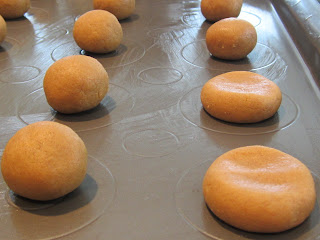 |
| Rice noodles with chicken and vegetables |
I know next to nothing about Filipino food, but I have
prepared this Filipino dish many times over the past year and it is seriously
delicious. In fact, I must confess that my husband and I polish off a whole
platter of this between the two of us in just one sitting. That’s how much we
like it.
The recipe comes from a cookbook called Extending the
Table: a world community cookbook, which
was given to me by one of my daughters and her husband. It’s a wonderful
resource put together by the Mennonite Central Committee. In among the recipes
from around the world are stories about the people behind the recipes and
inspirational perspectives on the role food and community play in our lives.
In the Philippine community, this dish is known as pancit
bihon, which means rice noodles. This recipe calls for adding the uncooked rice noodles directly to the pan. This is what I do. It is a bit messy. To avoid the mess and the excitement
of the threadlike noodles scattering themselves across your stove top, you can
soak the rice noodles in warm water for ten minutes or so and then cut them into smaller
pieces before adding them to the dish. I’ve only used rice noodles, but regular vermicelli could be used although you will want to precook it before adding it to the dish.
Additionally, you could substitute pork for the chicken; add shrimps if you like; and use whatever vegetables you have on hand in place of those in the recipe, increasing the amounts of veg and meat if you want. In the original recipe, the hard-cooked eggs, green onions and lemon slices are given as a garnish. I recommend including them with the dish. They look wonderful and taste even better!
Additionally, you could substitute pork for the chicken; add shrimps if you like; and use whatever vegetables you have on hand in place of those in the recipe, increasing the amounts of veg and meat if you want. In the original recipe, the hard-cooked eggs, green onions and lemon slices are given as a garnish. I recommend including them with the dish. They look wonderful and taste even better!
MA’s Pancit Bihon
 |
| Pancit Bihon ingredients |
2 tbsp cooking oil
2 cloves garlic, minced
1 large onion, finely chopped
1 cup cooked chicken, chopped
3 tsp fish sauce
2 cups chicken broth
½ tsp salt
¼ tsp pepper
1 cup carrot, diced
1 cup green beans, cut into 1” pieces
1 cup cabbage, coarsely shredded
8 oz rice noodles
2 eggs, hard-cooked and chopped
2 green onions, diced
1 or 2 lemons, sliced
 |
| Cooking the rice noodles |
In a large frying pan, heat cooking oil over medium heat.
Add garlic and onion and sauté until just softened.
Add cooked chicken, fish sauce, chicken broth, carrots,
beans, cabbage, salt and pepper. Simmer for 10 minutes or until vegetables
begin to soften.
Add rice noodles and cook 5 to 8 minutes or until noodles
are tender. Add more broth or water as needed if mixture is too dry to cook the
noodles.
Place noodle mixture on a large platter. Garnish with eggs,
green onions and lemon slices.




























